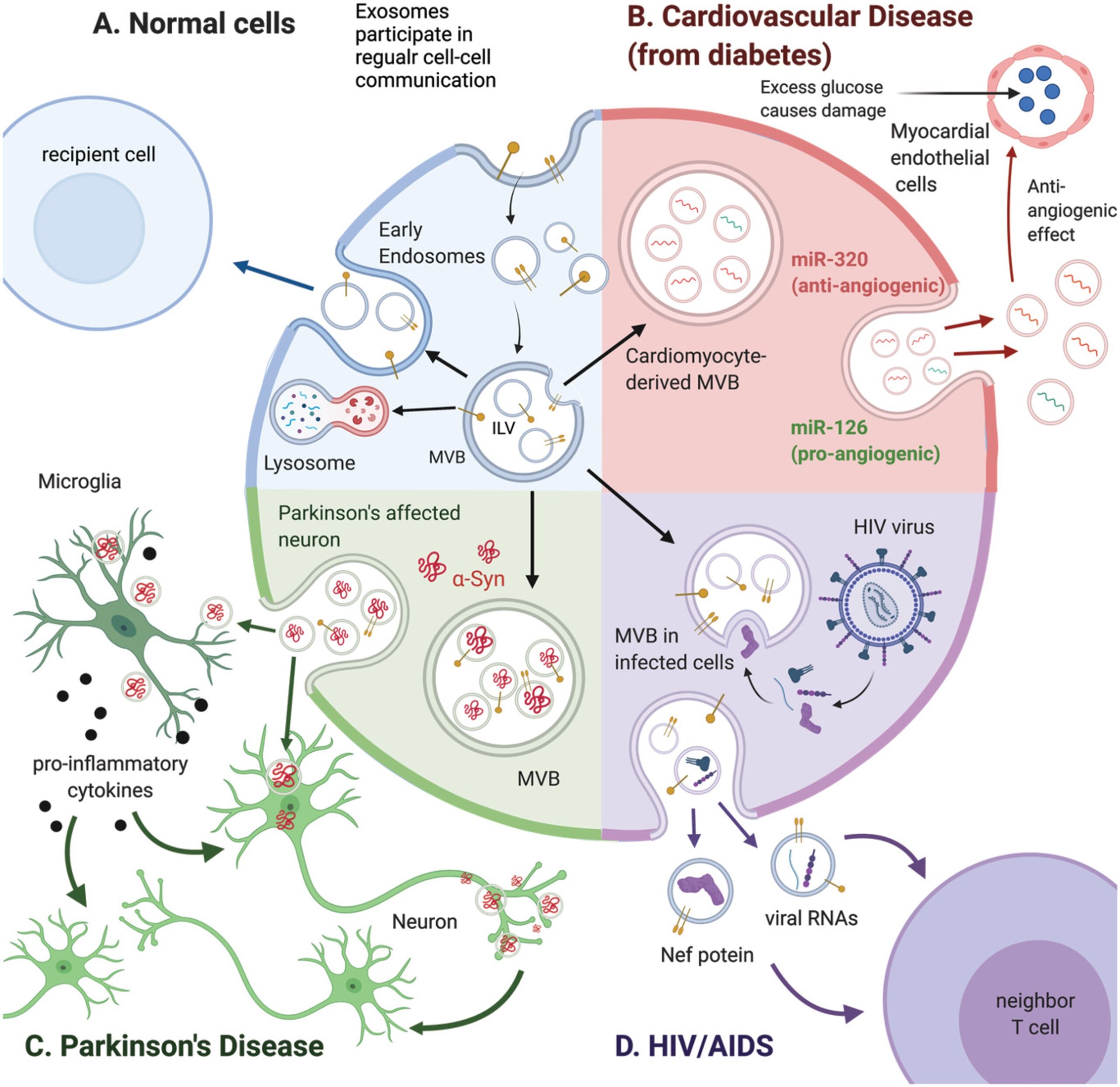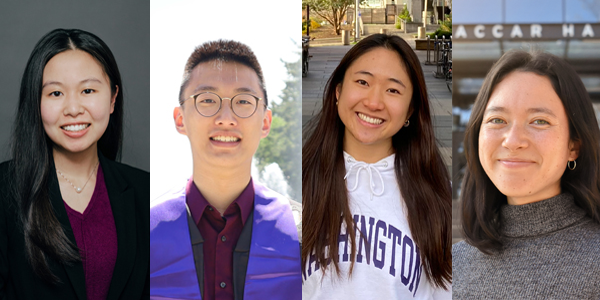Remote study during the pandemic leads to a creative approach to learning
Pictured above (l-r): Zoe Chau, Samuel Chen, Joanne Liu, Ruby Lunde
The pandemic has made life difficult for most people, but it also has created some interesting opportunities. Because UW students couldn’t attend classes in person in 2020 and 2021, those in science majors were unable to work in labs. Students missed opportunities to further their education and gain hands-on experience. However, two UW professors came up with a clever way to keep their students engaged and learning. James Lai, former UW Bioengineering research associate professor now at National Taiwan University of Science and Technology and John Hill, affiliate associate professor in UW Bioengineering, invited their students to gather research on exosomes and write a paper about their findings to benefit other researchers. For more than 12 months, four UW undergraduate students collaborated on the study with five university students living in Taiwan, which led to the paper being published in the respected journal Advanced Science.
The four UW students are new graduates Ruby Lunde (bioengineering ’22) and Samuel (Sam) Chen (mechanical engineering, ’22) as well as rising seniors in bioengineering Zoe Chau and Joanne Liu. Katalin Korpany, UW Bioengineering research scientist, was also a co-author on the paper.
The goal of the project

Illustration courtesy Sam Chen. Created with BioRender.com.
The students set out to create an analysis of exosomes, the extracellular vesicles found in all body fluids that play a key role in cell-to-cell communication in various normal and pathological functions. The team also aimed to provide insight on clinical applications and key challenges. “We wanted to develop an in-depth review for researchers who are also interested in this field,” Sam said. In doing the research, the students discovered there was a lot of exosome literature and clinical trials related to cancer but not other clinical conditions such as Alzheimer’s, tuberculosis and HIV co-infection, and cardiovascular diseases. The students decided to focus on these illnesses.
The process
With 10 researchers working on the paper, organization was important. “We grouped ourselves into smaller subgroups where we would each work on a portion of the paper,” Joanne said. “It was a new field for everyone, and we started off with a lot of literature searches.” The students focused on understanding the basics about exosomes and then spent time over a year synthesizing the information.
Collaborating with students from Taiwan
Working with students from National Tsing Hua University and National Taiwan University also provided new perspectives. “James has always had international collaborators in Taiwan, Japan and Korea,” Zoe said. “He has discussed with me how the research approach in international settings can be different from what we’re used to here. Being able to see that firsthand and see how the fellow authors processed and articulated the research was very interesting.”
The significance of the research

James Lai, now associate professor at National Taiwan University of Science and Technology.
Exosomes show potential for improving diagnostics or disease therapies. Using them to help diagnose, predict disease progression and treat cardiovascular, neurodegenerative and infectious diseases is not a new area of research. However, because exosomes lack standardized Good Manufacturing Practices for their processing and characterization, their development lags behind protein-based biologics. “Exosomes hold promise to address various unmet needs if consistent high-quality production can be achieved,” Professor Lai said. “In reviewing the guidelines for studying extracellular vesicles in conjunction with the literature, our group assembled a standardized workflow to facilitate reproducible exosome processing and characterization.” Doing so will enable life science researchers to expand exosome technologies.
The students were both surprised and proud their paper was published by a highly regarded publication. As first-time writers without expertise on the topic, some mentioned they were amazed the review was picked up by Advanced Science. However, Ruby felt differently. “I was not surprised that the article was picked up by a prestigious journal because I know the quality of the work that we have produced and the standards that my principal investigator, James Lai, has set for our projects,” Ruby said. “We have earned our place in this journal, and I am proud of our team.”
What the students learned about themselves and teamwork
The students were disappointed that they weren’t able to be in person to learn lab and technical skills, however, the project enabled them to expand their knowledge and abilities in a different way. “Being able to read through literature and find the information you need efficiently is a really important skill for bioengineers,” Joanne said. Zoe added, “This was a really great exercise. I don’t think I would have been able to build these skills if we didn’t transition to remote research.” Ruby shared how she learned the importance of respecting timelines. “Staying on our timeline was sometimes difficult because we were also full-time students during our time writing and compiling research,” she said. “We all worked together and respected one another.”
Before the pandemic started, Sam had planned on attending a conference in Japan and the Tokyo Olympics. Instead, he devoted himself to writing the paper with others, which he said was challenging at times. “We did learn a lot about applying different techniques,” he said. “That became very valuable to me for knowing what research area I wanted to focus on in grad school. It made me more interested in characterization systems with different biomarkers and to possibly do this research for the next five years in grad school.”
In reflecting on the project, Professor Lai said, “These students are my heroes. Their commitments show me light at the end of the tunnel through this dark pandemic era. Our journey together allows me to gain deeper understanding of education and mentorship.”
What’s next?
The students have very diverse goals post-graduation. Joanne is interested in point-of-care diagnostics and making health care more accessible. Ruby accepted a position with Bristol Myers Squibb, and she co-founded a start-up company with Sam and others called OsmoProcessor, which aims to develop an osmotic concentrator for diagnosing tuberculosis. (Read about Ruby’s other accomplishments.) Sam will be pursuing his Ph.D. in bioengineering at Georgia Tech and then wants to go into industry. Zoe is interested in combining patient experience with biomedical technology, especially via implantable devices.
Article by Arden Clise


